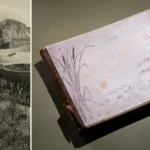The Story of P-22: Los Angeles’ Most Isolated Mountain Lion
For years, rumors swirled in the Hollywood Hills about a mysterious 90-pound mountain lion roaming after dark. Locals reported sightings in one of Los Angeles’ busiest parks. In 2012, wildlife officials confirmed the presence of the big cat. Wildlife cameras captured a photo of a young male mountain lion, later named P-22. He had traveled nearly 30 miles alone, crossing two massive freeways to reach Griffith Park. His lonely journey eventually inspired the creation of the LA wildlife crossing, a project designed to reconnect fragmented habitats and protect animals like him.
P-22 quickly became a symbol of urban wildlife survival. Yet, despite his fame, P-22 lived in isolation. The sprawling city and its highways cut him off from other mountain lions, leaving him little chance of finding a mate.
Understanding the Urgent Need for a Los Angeles Wildlife Crossing for Mountain Lions
Beth Pratt, the California regional director of the National Wildlife Federation, met with wildlife biologist Jeff Sikich. She discovered that P-22’s isolation wasn’t an isolated case. Many mountain lions in the Santa Monica Mountains were also trapped in confined areas. Roads and freeways had carved up their habitat, blocking access to larger territories. Without a connected wildlife corridor, the animals began to suffer from inbreeding and loss of genetic diversity.
Roadways and freeways in LA act as barriers that trap wildlife within limited territories, leading to dangerous levels of inbreeding and threatening the survival of species like mountain lions, bobcats, and coyotes. Mountain lions typically need home ranges of up to 250 square miles. They suffer greatly when roads and development restrict their movement.
The Vision for the Largest Wildlife Crossing in Los Angeles
In response, Los Angeles began building the LA wildlife crossing, the largest structure of its kind in the world. The 165-foot bridge will span the 101 Freeway at Liberty Canyon. Designers shaped it to blend with the natural terrain and reconnect mountain lion habitats. Set to open in 2026, the crossing will help animals move safely across highways. It aims to reduce roadkill and give wildlife more space to roam, lowering the risk of inbreeding.
This Los Angeles wildlife crossing for mountain lions is unprecedented not only in scale but because it is located within a major urban environment. It represents a groundbreaking effort to harmonize urban development with wildlife conservation.
Early Efforts to Reconnect Mountain Lion Habitats in Los Angeles
Scientist Paul Edelman first studied the idea of a wildlife crossing in 1989. At the time, he worked as a consultant for The Nature Conservancy. He received a grant to explore ways to link Southern California’s mountain ranges. His goal was to improve wildlife movement across fragmented habitats..
In his 1990 report, he identified Liberty Canyon as the best location for a wildlife crossing. It would span the eight busy lanes of the 101 Freeway. Over the years, he worked tirelessly to secure land on both sides of the highway. He faced major challenges, including private ownership and competing development proposals.
The Devastating Toll of Roadways on California’s Mountain Lions
Vehicle collisions claim hundreds of mountain lions annually in California. A University of California, Davis study reported 613 mountain lions killed on roads from 2016 to 2023, costing over $1.6 billion in damages.
The stretch of the 101 Freeway near the Santa Monica Mountains is particularly deadly, with more than a third of these deaths occurring there. Wildlife advocates hope the Los Angeles wildlife crossing for mountain lions will significantly reduce these fatalities.
How P-22 Became the Face of the Wildlife Crossing Movement
Beth Pratt saw the power of P-22’s story to inspire public action. She turned the mountain lion into a beloved urban icon through social media and viral campaigns. Her efforts raised awareness about the need for the LA wildlife crossing. She also helped raise over $100 million in funding. Half came from private donors, including major philanthropists and celebrities.
Marketing efforts featured P-22 merchandise, limited edition collectibles, and storytelling that made the mountain lion relatable to the people of LA. This grassroots enthusiasm was critical in moving the project forward.
Designing a Functional and Inviting Wildlife Bridge for Mountain Lions and More
Landscape architect Robert Rock led the design of the crossing with input from biologists and engineers to ensure animals would use it. The bridge’s width, vegetation, slope, noise mitigation, and even the color of the concrete were carefully chosen to create a natural corridor.
The bridge will also serve as an escape route during wildfires, a growing concern in fire-prone California. Plants on the crossing will be irrigated and maintained to support regrowth after fires.
The Broader Impact: Los Angeles Wildlife Crossing as a Model for Urban Conservation
The Wallis Annenberg Wildlife Crossing is already inspiring similar projects nationwide, from salamander crossings in Mississippi to tribal park crossings in North Dakota. The federal government has funded pilot programs to support such infrastructure.
The success of this crossing could reshape how cities accommodate wildlife, balancing urban expansion with ecological sustainability.
The Legacy of P-22: From Lonely Puma to Conservation Catalyst
In late 2022, P-22 exhibited signs of illness and human interaction, highlighting the ongoing challenges wildlife face in urban areas. When Pratt met him one last time before he was euthanized, she shared how his legacy had sparked a movement.
The Los Angeles wildlife crossing for mountain lions is the lasting monument to P-22’s lonely journey — a beacon of hope for wildlife survival in one of America’s busiest cities.




